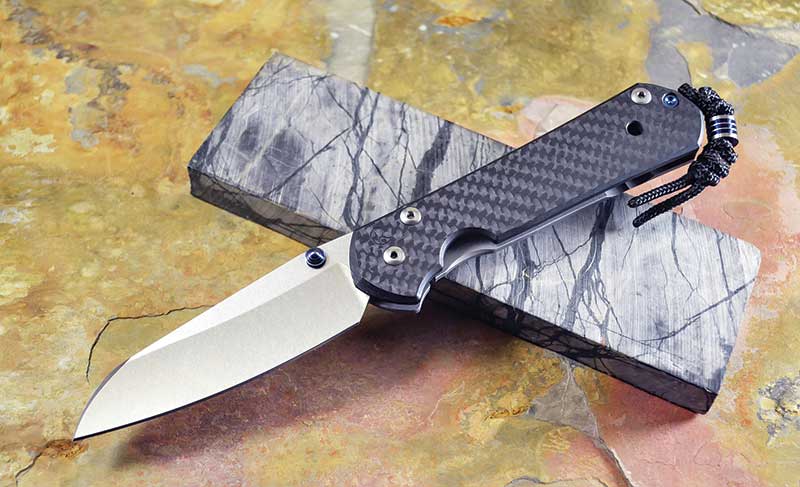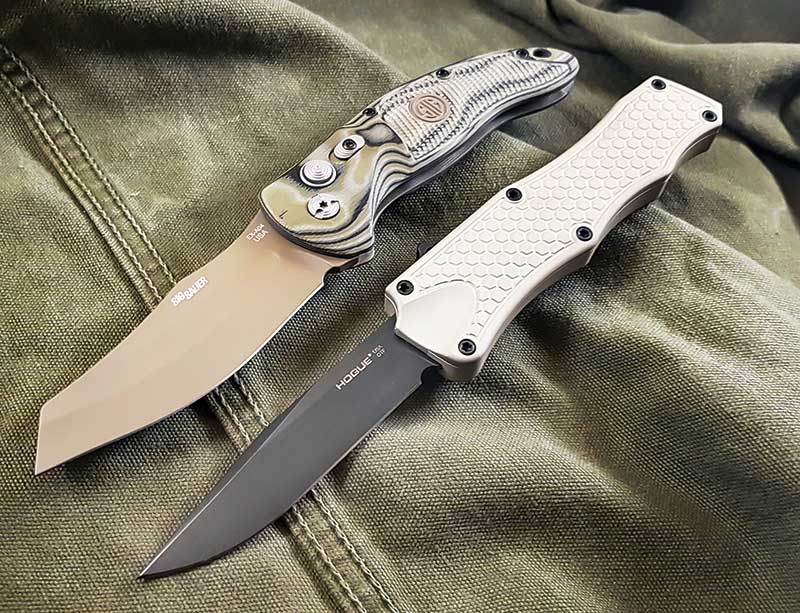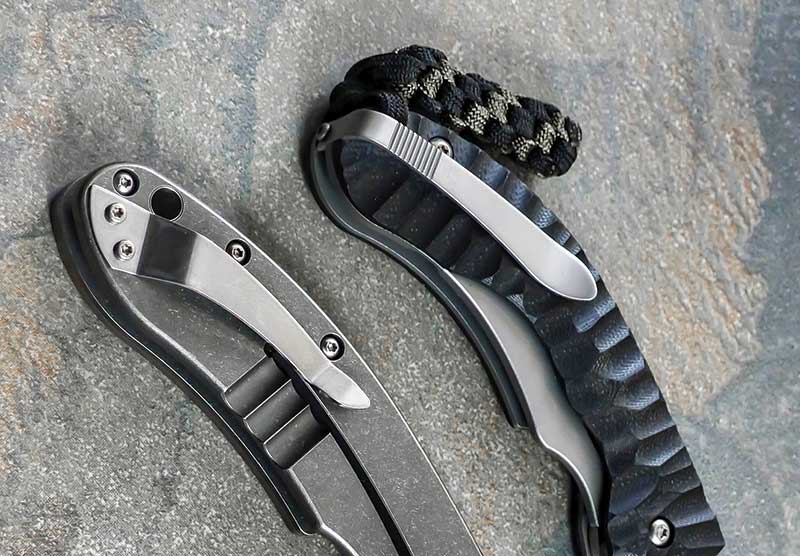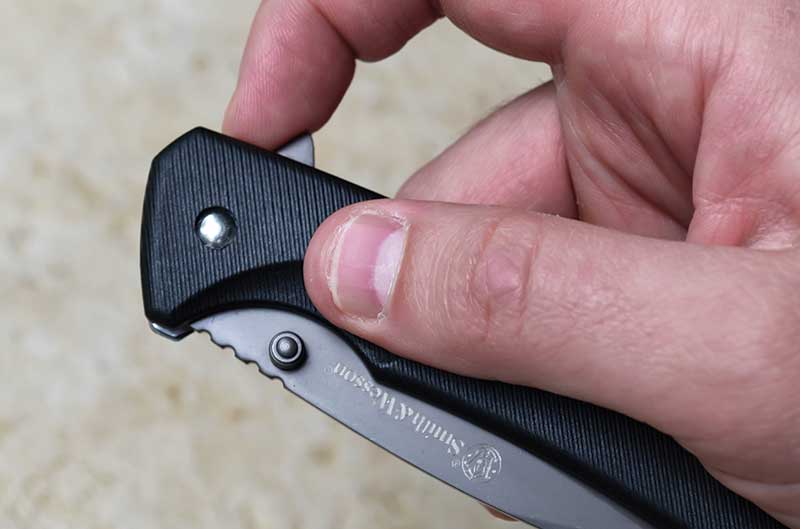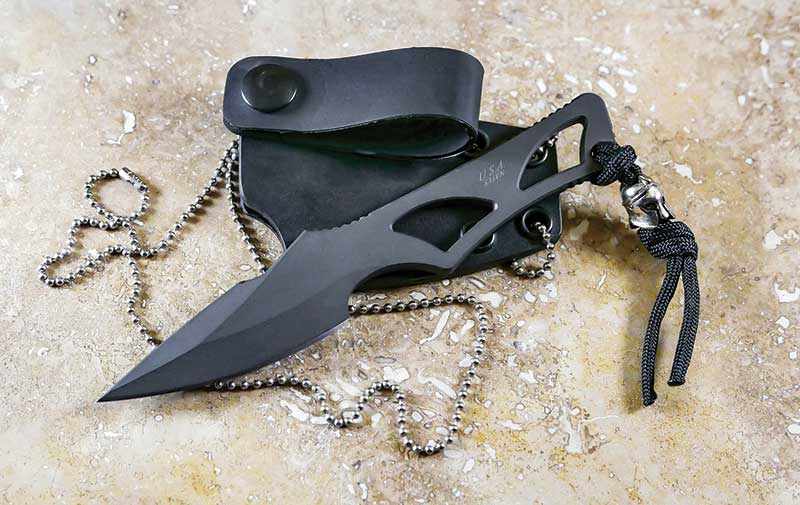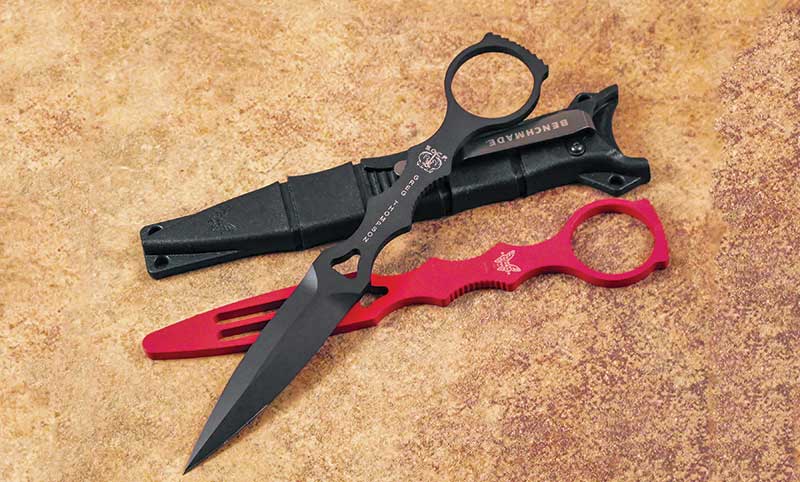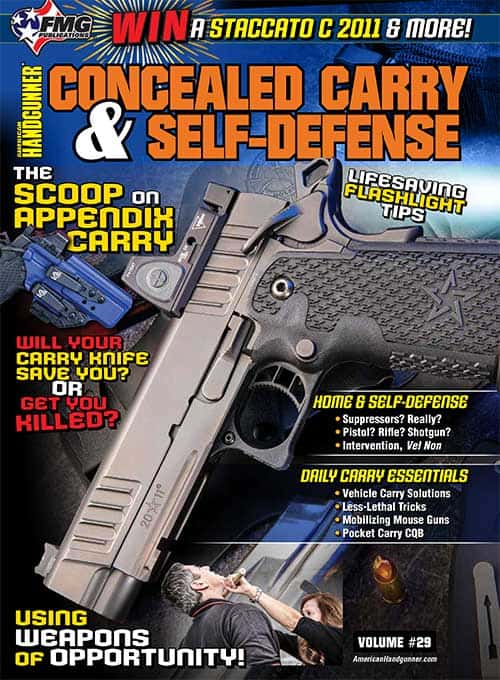Stealth Steel!
How to select and conceal a defensive blade
Many firearm users carry an edged weapon as a backup for their firearm should it fail, and many prefer to have some form of self-protection at the ready when going places where guns aren’t allowed. Concealing your knife is just a sound idea because it gives you the element of surprise should you need it for self-defense and, at the very least, gives the snowflakes who cross your path one less reason to get triggered. Let’s look at the major considerations in selecting, carrying and concealing an edged weapon beginning with the heart of the knife — the blade.
The Perfect Cut
The ideal blade style depends on what you expect from your knife. If you are planning to carry purely for self-defense, several blade designs are best-suited for combat. These are the Japanese Tanto, Dagger, Hawkbill and Wharncliffe. The Tanto is a straightforward design with an upswept tip (curved or straight grind) which excels at penetration and slicing. The Dagger blade is sleek, symmetrical and preferably ground on both sides. This blade style is superb at penetration. The Hawkbill, best known for its presence on Indonesian Karambit knives, resembles a bird’s beak and is known for grabbing, snatching and slicing. Finally, the Wharncliffe, a relative of the Sheepsfoot, has a straight edge with a downward-sloped tip superb for grabbing and slicing whatever comes its way.
Only one of these blade styles offers versatile utility, however, and it’s the Wharncliffe. This blade design is a favorite of working-class heroes such as electricians and carpenters. If you like a little utility when you’re not dicing it up with bad guys, this is your blade.
Keep in mind these are not the most common blade styles on tactical knives. Those would be the drop point, clip point, trailing point and spear point, all of which — like the Wharncliffe — offer greater utility. To many users it’s worth the tradeoff of having a more useful EDC blade capable of handling a wider variety of daily chores.
The Hidden Handle
Regardless of whether you’re concealing a folding knife or a fixed blade it’s best to keep the thickness of the handle to a minimum. Anything over 3⁄8″ adds bulk to the knife, making it harder to conceal. Knife handles
come in a wide variety of shapes ranging from purely simple to Corvette curvaceous. A simpler handle is easier to conceal, but kept within reason, a curved handle isn’t a problem.
Fixed-blade knives, with their added length, are more problematic. The more inches added to the knife’s length, the more difficult it is to keep under wraps. Make sure to have the adequate space to accommodate the mode of carry you plan on employing to facilitate concealment — and have the freedom of movement to keep it this way. Some fixed-blade designs eschew handle materials altogether making concealment much easier. The handles of these all-metal knives often are “skeletonized” with cutouts for weight savings.
Fixed Or Folder?
The reason the overwhelming number of knives of the folding variety are sold today is sheer convenience. Folders take up roughly half the space of fixed blades in length — a boon for concealment. It’s like keeping your knife hidden away in a suitcase until you need it. The tradeoff is folders are much thicker across the midsection.
There’s another major cost for the convenience of carrying a folding knife. A folder must be pulled from concealment (typically the pocket), oriented in the hand, blade deployed and locked and lastly the knife must be re-oriented in the hand to the grip position. All of these steps can take seconds of valuable time.
On the other hand, a fixed-blade knife simply needs to be removed from its sheath, oriented to the grip position and boom — it’s ready to cut. Some users feel this time savings is worth it. Another advantage fixed blades have over folding knives is they have no moving parts that can fail. Granted, the likelihood of a well-made folder breaking is rare, but some feel simpler is better and prefer to remove all doubt.
Speedy Blade Delivery
Folding knives have advanced light years in the modern tactical era. Custom knife maker Michael Walker’s thumb stud/liner-lock combination revolutionized the industry, and fellow custom maker Ken Onion’s spring-assist mechanism added lightning speed to the equation. Assisted openers are a very viable way to go and can be had with or without a flipper mechanism, allowing the index finger to initiate blade release. Ball bearing blade pivots also add to the quickness — and smoothness — of the blade action.
Automatics (the knives formerly known as “switchblades”) have made a comeback in recent years as most states have legalized these demon seeds. Both side-opening and out-the-front versions are available, and the technology has never been better. As laws have been relaxed more and more, manufacturers have jumped into the fray so selection is broad. Just as with a firearm, handling a knife personally before buying is highly recommended. The speed of blade delivery for a self-defense/combat-edged weapon is extremely important and can save your life. Be sure to check your local and state laws for ownership of an automatic, as these can vary.
Hidden Surprise
Concealed carry not only allows the freedom to move seamlessly through your environment, it gives you the element of surprise when you need it. One of the greatest innovations of the modern tactical folder era has been the addition of the pocket clip to facilitate ease of carry and provide readiness when needed.
But not all pocket clips are the same. More and more we’re seeing “deep” model clips that allow the folder to ride just below the lip of the pocket. These conceal the knife better, but you have to dig in the pocket to get a finger grip on the knife. Alternatively, pocket clips allowing the folder to extend a half-inch or so above the lip of the pocket are easier to grab — but part of the handle will be exposed during carry. Wearing a flat hemmed shirt outside of your pants, such as a Hawaiian or Guayabera style, can negate the problem. The choice is yours.
Fixed blades offer more diversity in concealed carry, all requiring a garment to cover the knife and sheath. Highly popular is the horizontal belt sheath either mounted at the back for rear reach or at the side for cross-draw. You can go with a vertical belt mount, but it requires more garment length to provide cover.
If your fixed blade is small enough, go with a neck sheath mounted on a chain or cord. Engagement requires reaching up under the shirt, sweater or jacket, grabbing the handle and pulling down to release the knife. Boot carry, popularized by tales of riverboat gamblers, is another viable option. Typically, the sheathed knife is clipped to the boot and drawn by the favored hand. Finally, a shoulder harness — though not common — is a workable option and can be carried in tandem with a firearm.
Training Pays
Simply stated, there is no substitute for training. Blade and handle styles, deployment methods and types of carry are all secondary to understanding how to use a knife under the stress of real-life combat. Forget Hollywood, fancy tricks and dancing maneuvers. Reality-based edged-weapon confrontations are typically over in a minute, maybe two, sometimes three. Any time wasted on being flashy is time your opponent is spending carving you up. The winner of a knife fight is the person who thinks the quickest, acts the fastest and has trained the most to put themselves in the position to win.
Disciplines abound in the edged-weapons world from those concentrating solely on knife combat to others who incorporate one or more methods of martial arts techniques. There are different knife grips used depending on the discipline. For instance, the reverse grip is used almost exclusively in Karambit combat. Some manufacturers offer special blunted plastic or steel training models matching the profile of their combat knife. YouTube videos are helpful but will not prepare you for combat. You must be trained in-person by a knowledgeable professional who specializes in your preferred discipline.
As you can see, when purchasing a concealed carry knife there are many factors to consider. Aside from your all-important training, first determine how you plan on concealing the knife. Choose a blade style suitable to your purposes by determining how much emphasis you wish to place on self-defense versus utility. Make sure the knife fits your hand in both size and comfort.
The knife market is burgeoning with an excellent selection available for all budgets. Take your time, choose wisely and happy cutting!



